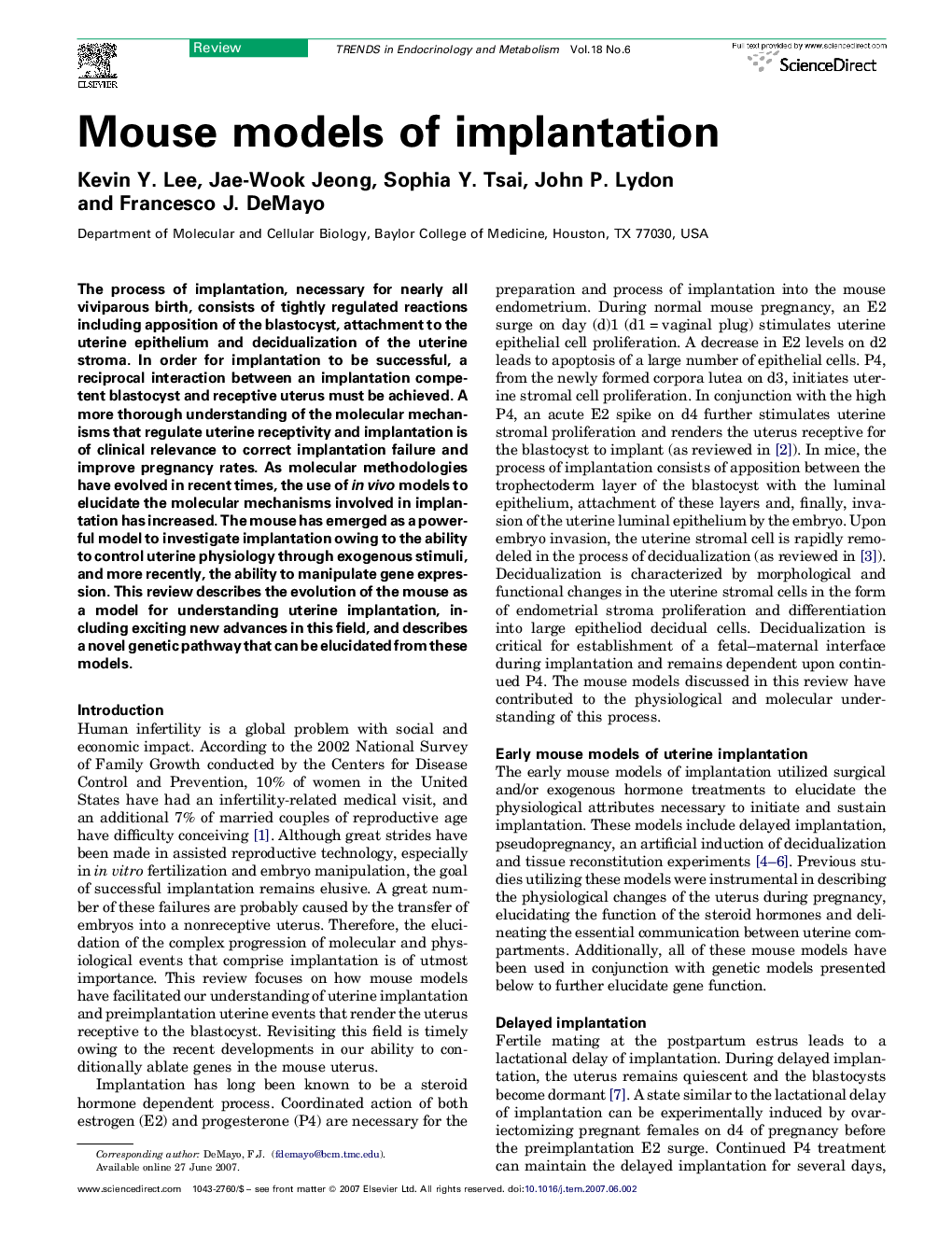| کد مقاله | کد نشریه | سال انتشار | مقاله انگلیسی | نسخه تمام متن |
|---|---|---|---|---|
| 2810971 | 1158501 | 2007 | 6 صفحه PDF | دانلود رایگان |

The process of implantation, necessary for nearly all viviparous birth, consists of tightly regulated reactions including apposition of the blastocyst, attachment to the uterine epithelium and decidualization of the uterine stroma. In order for implantation to be successful, a reciprocal interaction between an implantation competent blastocyst and receptive uterus must be achieved. A more thorough understanding of the molecular mechanisms that regulate uterine receptivity and implantation is of clinical relevance to correct implantation failure and improve pregnancy rates. As molecular methodologies have evolved in recent times, the use of in vivo models to elucidate the molecular mechanisms involved in implantation has increased. The mouse has emerged as a powerful model to investigate implantation owing to the ability to control uterine physiology through exogenous stimuli, and more recently, the ability to manipulate gene expression. This review describes the evolution of the mouse as a model for understanding uterine implantation, including exciting new advances in this field, and describes a novel genetic pathway that can be elucidated from these models.
Journal: - Volume 18, Issue 6, August 2007, Pages 234–239